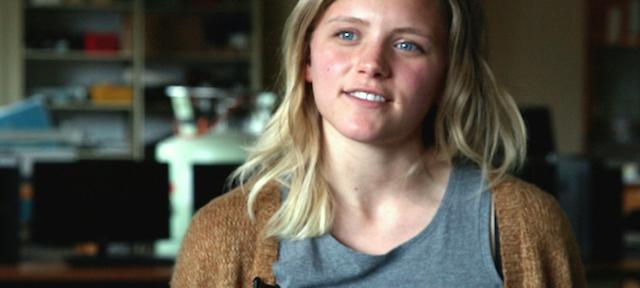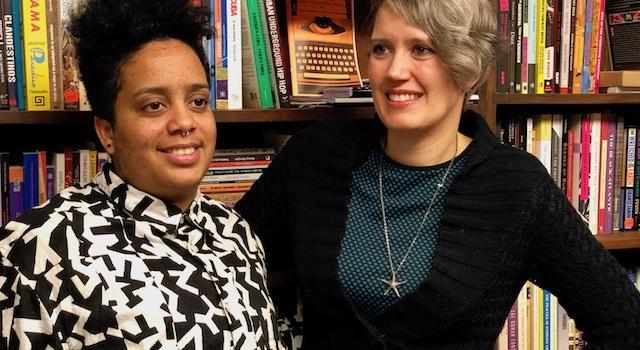Student Presents Original Research of 16th Century Maya at American Chemical Society Symposium

For her Division III capstone research last year, Hannah Huggins used Hampshire’s mass spectrometer to study ancient Mayan teeth and try to assess the degree to which the Spanish who invaded their region in the 16th Century had affected their health.
“Teeth grow like tree rings, and they’re highly inorganic, so all of the trace elements from the environment in teeth are captured in an incremental way,” says Huggins. “Using this awesome technology, I was able to access each point along the tooth and reconstruct the exposures Mayan children had at different points in their life. And, in doing so, we can assess if their health changed when the Spanish invaded that territory.”
For her research, Huggins utilized Hampshire’s inductively coupled plasma mass spectrometer, coupled with a laser ablation system, which generates minute particles from a solid object and allows chemical analysis.
Professor of Biological Anthropology Alan Goodman, serving on her faculty committee, explains that Huggins studied teeth excavated from the Lamani archaeological site in northern Belize. These teeth dated back to around the time of the Spanish conquest of the Maya in the 1500s.
Huggins looked at four chemical elements using laser ablation technology and analyzed changes in children’s canine teeth in elemental composition, to study their nutrition. Goodman says her findings reinforce the theory that this particular group of Maya resisted colonization, because although the Spanish had imported lead goods to the region in that era, Huggins did not find lead in these children’s teeth.
For her Division III research project, Huggins was also advised by Professor of Chemistry Dula Amarasiriwardena, who served as chair of her faculty committee.
Using dental remains to reconstruct diet and understand environmental exposure, Huggins explains, is a relatively new field. As an undergraduate, she had the rare accomplishment of contributing previously unknown data that she hopes other researchers and scientists will be able to build upon.
Hampshire's unique academic program empowers many science students to progress to author research by year four, often in collaboration with faculty, and to submit it for conference presentations and journal publications, a rare opportunity for undergrads.
In the spring, Huggins presented the findings of her research at the American Chemical Society’s Connecticut Valley Undergraduate Symposium. She collaborated with her two faculty advisers on the presentation, titled “Laser ablation-inductively coupled plasma-mass spectrometry analysis of teeth to determine weaning patterns of ancient Maya from Lamanai, Beliz.”
Reference Links
Read about Hampshire's National Science Foundation award to acquire a new mass spectrometer in 2017.
See a list of Hampshire’s published undergraduate authors at http://hamp.it/SciAuthors.
See a list of published research and presentations by Dula Amarasiriwardena, much of it coauthored with his students from Hampshire and the Five Colleges:
Publications http://helios.hampshire.edu/%7EdaNS/pubs.html
Presentations: http://helios.hampshire.edu/~daNS/pres.html



